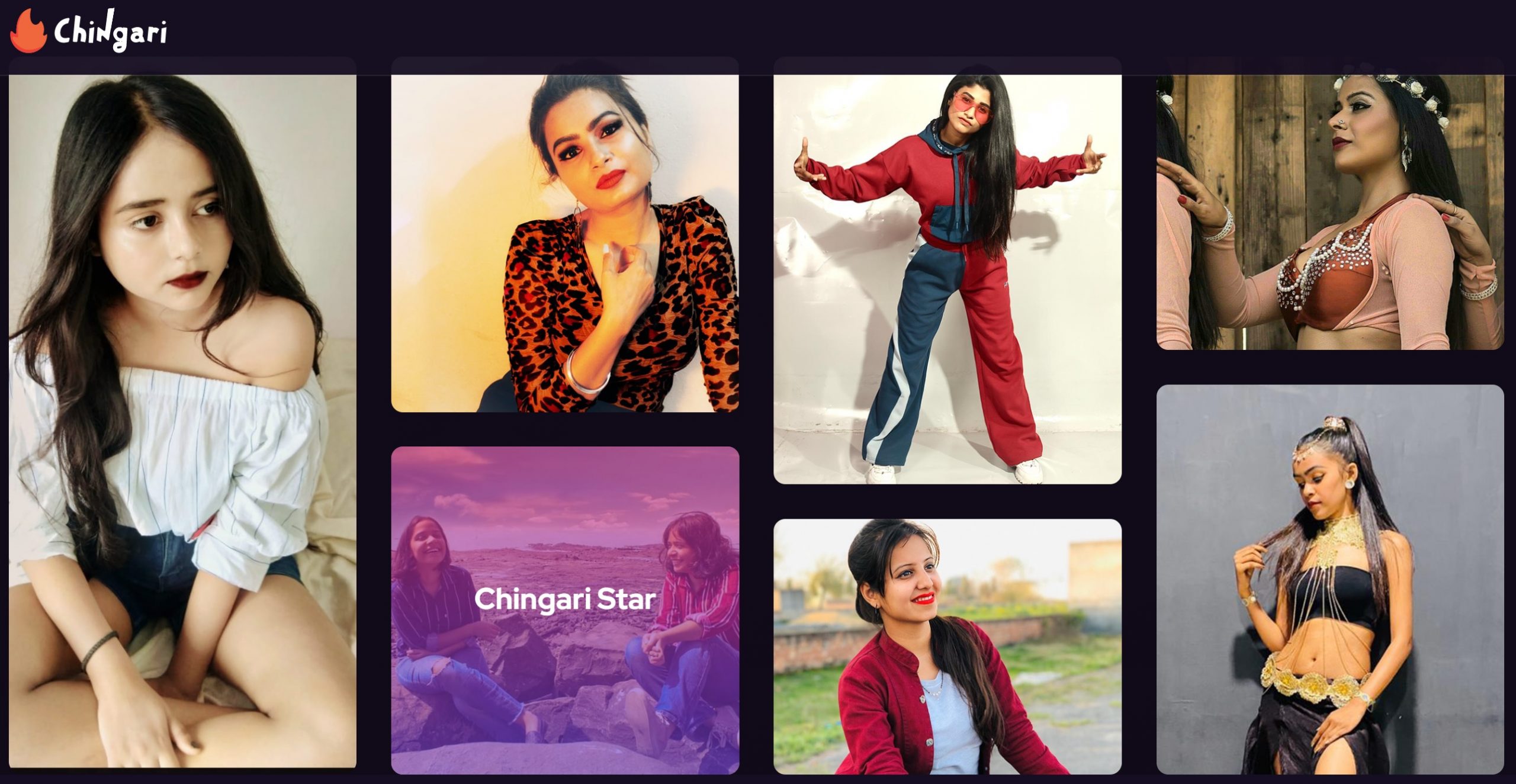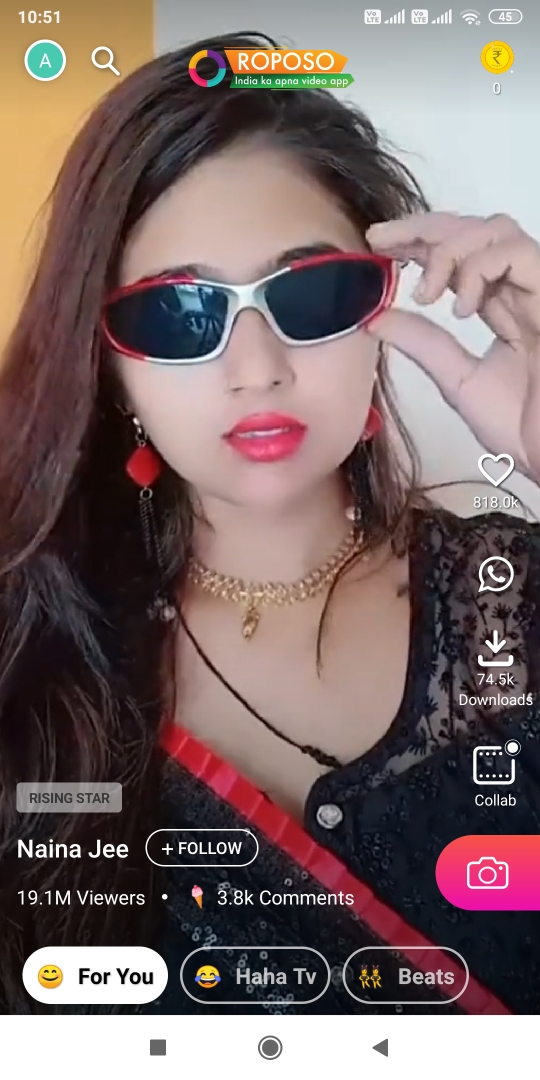If the sudden surge in app downloads and user sign-ups are indicative of a startup’s achievement, then Indian short-video apps such as Chingari, Roposo, Mitron TV, and Trell, among others have all achieved a lot over the past few weeks, as they managed to swoop in and take advantage of the sudden departure of TikTok.
InMobi-owned Roposo claimed it added 22 new million new users since the ban, while Chingari said its users number increased to 25 million from a mere 3.5 million before TikTok was asked to discontinue to operate in the country.
After chasing TikTok’s users and creators, short-video companies are now looking to onboard brands allowing them to run campaigns and advertisements on their apps. Media buyers and digital ad analysts told KrASIA, brands are also on a lookout for the next best platform where they could spend their ad budget allocated for TikTok.
“Brands took two to three days to take stock of the situation and now they are moving fast. Companies in the space of OTT, gaming, FMCG, and e-commerce, among others are in talks with us for brand integration,” said Naveen Tewari, CEO of InMobi.

TikTok offered several real estate options to brands to run their campaigns which could be tailored based on their needs. One of the most famous ad formats include #HashtagChallenge where brands ask people to perform some interesting or quirky task and post it on TikTok tagging the specific hashtag. Other ad structures include in-feed native video that takes users to the seller’s website, branded camera lens, and filters.
“With the kind of reach and engagement TikTok enjoyed with both youth and small towns, it was huge. For mass brands, this was an important medium for advertising,” said Debarpita Banerjee, President North and East- FCB Ulka, a global advertising agency.
ByteDance’s short-video app reported that five percent of its total revenue in financial year 2019 in India came from brand campaigns and advertisements amounting to INR 2.16 crore (USD 290,000).
“This is complete vacation of the space that was occupied by TikTok and I see this as a sudden succession of an advertising space,” said Harish Bijoor, who owns a consulting firm that works with brands.
According to him, companies are in no hurry to jump on to the next available platform as ad spends this year have gone down due to COVID-19. “They’d like to spend their money wisely and are in no rush to committing to another company,” Bijoor said.
Ad spends fall
At a time when traditional media’s ad revenue has been hit hard as companies cut down their ad budget, analysts said social media digital platforms would benefit from this happenstance. By the virtue of being the most cost-effective ad platform with impressive reach, brands would prefer spending on social media digital apps than TV, an expensive media.
Indian video entertainment apps said they are already in discussions with several brands in consumer, lifestyle, skincare, online gaming, e-commerce, among other sectors. All kinds of brands—including big and small—like to run digital campaigns on video-led platforms as it’s a medium for the masses. Right from FMCG companies such as Lifebuoy and Pepsi, to e-commerce brands like Snapdeal, Zomato, and others have had their campaigns feature on TikTok.
“Since many of our users have a clear preference for regional languages, we’ve focused on communicating product features and aesthetics through various short video engagements. Our marketing campaign strategy on TikTok was aligned with its audience base and was directed at showcasing deals for audiences in the smaller towns and cities of India,” a Snapdeal spokesperson told KrASIA.
.

Chingari, that claims it was clocking 600,000 app downloads every hour after the ban, said, skincare brands Lakme and Emami are two among the 15 brands that have agreed to run campaigns on their app. It recently announced the launch of a talent hunt campaign called Chingari Stars hoping to add more creators and users. All the 15 brands, Chingari said are participating in the event.
“Brands will go anywhere they find users. Emami and Lakme approached us with some pretty interesting camera filter ideas which they think would increase engagement on the videos,” said Sumit Ghosh, founder, Chingari.
“A lot of new brands that don’t have budget for TV commercials prefer these social platforms as they want normal people like you and I to talk about their product,” Pulkit Agrawal, founder of short-video social media app Trell, told KrASIA.
The company is getting inquiries for brand engagement from a lot of beauty and personal care companies. According to Agrawal, Trell has partnered with about 50 companies to run different campaigns.
“Brands that had a huge budget for TikTok to run brand-specific hashtag challenges are now approaching us. We are enabling them to run those campaigns on our platform with the help of our creators,” Ghosh said.
Not even close to TikTok
In the two years of its operation in the country that was dotted with multiple bans and court cases, TikTok managed to remain popular among creators and users in the country. It splurged millions on marketing to onboard influencers who can create interesting and quirky short-videos. It claims to have 200 million app users.
It will take some time before its Indian counterparts could come close to what TikTok had managed to achieve during its time in the country. While TikTok has 1.2 million creators in India, Chingari said there are half a million content creators on its app. Of these, 1,000 creators are on a retainer model who get paid to create content. Roposo said, every day 3,000 to 5,000 influencers join its platform.
Read this: Chingari shines bright in its race to create the next TikTok: Startup Stories
All the short-video companies are trying to make the best use of the opportunity left open by TikTok’s absence. They are desperately looking at ways to add new users and creators who can keep the content fresh and engaging.
Chingari’s Ghosh is hoping the talent contest which has a mega winning amount attached to it, will result in the network effect bumping its user numbers. “Average time spent on the app and our retention numbers would increase, and we will have new users come in on their own as they go to Facebook and Twitter,” Ghosh said.
According to Banerjee from FCB Ulka, TikTok opened up a platform for a new kind of user-generated content, which enabled very unique storytelling. “With such high engagement, it also delivered on reach numbers. That made great ROI sense to marketers.”
Founders of home-grown social media platforms said TikTok spent a lot to get to the numbers it has. “While it did manage to get a lot more engagement, brands are impressed by our organic growth in user sign-ups and per video views,” said Agrawal.
Analysts believe the lack of an entry barrier has resulted in the growth of TikTok look-alike Indian alternatives.
“If any other platform is able to do half the job TikTok did, they would attract influencers, which in turn would make consumers and advertisers to automatically move there,” Anubhav Sharma, co-founder, SyncMedia & Adtech, told KrASIA.
Although, TikTok till now has enjoyed the leadership position it has not set the bar high enough to offer any evolved advertising opportunity. “Large platforms like Google and Facebook are able to do this better and retain fair share of advertising budgets because of their evolved advertising solutions that are aligned with business outcomes, be it the measurement, attribution, or the impact on business KPIs,” Sharma said.
According to him, the only tool to measure the success of their marketing campaign on TikTok was high number of impressions, which he said is the lowest hanging fruit in the hierarchy of digital campaign measurement.
Read this: Life after TikTok ban in India: the search for a perfect alternative
“Anyone with enough engineering capability and resources can release an app, especially in a me-too category. The entry barrier however is determined by how you make the platform better for advertisers. What makes these apps really grow is not the audiences alone, but also their partnerships with advertisers,” Sharma said.
He believes the company that is able to tell brands dynamic measurement information such as who saw their campaign videos and if it affected their sales in the geography they belong to, would give a unique proposition to companies and making it difficult for them to try other platforms.
“Delivering high volumes of impressions at the lowest price point and getting higher VTR (view-through rate) on a short video format is not a barrier. Advertisers will of course move to the next best platform,” he said.
TikTok denied to participate in the story.
Indian short-video platforms said brands are satisfied in knowing impressions their campaign received, and the quality of engagements on the video such as likes, shares, and comments. “We are able to offer them everything they need to gauge the success of their campaign,” said Agrawal.
However, Sharma believes if these companies don’t work on offering something exclusive to brands the market would be open for anyone for a very long time.
“Even if the top three platforms share 20-30% of brands’ budget among themselves it might look like they have made it. But then the real fight would begin of who is delivering better.”


